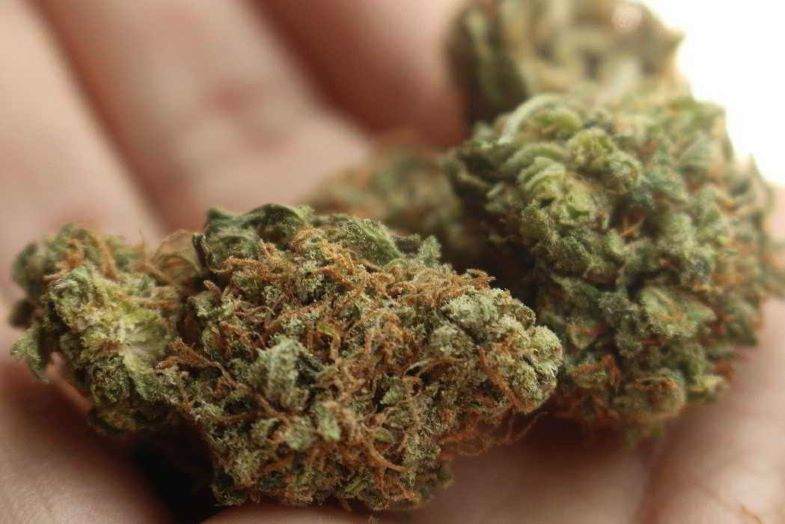Modified on: 26/08/2024
DO YOU WANT TO KNOW MORE ABOUT CANNABIGEROL? HERE ARE THE IMPORTANT INFORMATION ABOUT THIS OTHER CANNABINOID
In addition to CBD and THC, marijuana and CBD cannabis plants also produce many other cannabinoids you surely never heard of.
One of these that has recently become the subject of studies and experiments is cannabigerol, also called CBG.
-
 SMALL & BIG
SMALL & BIGBUBBLEGUM
Starting from: 1,25CHF/gIndoor | CBD – CBDA <22%
Grams3 5 10 20 50 100 -



DO SI DOS
Starting from: 2,00CHF/gIndoor | CBD – CBDA < 19%
Grams3 5 10 20 50 100 -



ROYAL GG#4
Starting from: 2,30CHF/gIndoor | CBD – CBDA < 40%
Grams3 5 10 20 50 100 -



GORILLA GLUE
Starting from: 2,90CHF/gIndoor | CBD – CBDA < 20%
Grams3 5 10 20 50 100
Why are we talking so much about it?
What is Cannabigerol?
What role does it play in the plant, and what effects does it have on the human organism?
You will find here everything you should know about this substance and why it is being heard more and more.
Cannabigerol: What is it?
Cannabigerol or CBG is a cannabinoid from cannabis and CBD marijuana.
Although it is now nicknamed “Cannabis Stem Cell“, CBG was not considered as much as other cannabinoids until recently, and its effects have never been studied.
Wonder, why?
Keep in mind that CBG is only present in the mature cannabis or legal marijuana plants in amounts of 1% or less. The substances to which the researchers became aware were, therefore, always very different.
On the other hand, the deepening of the CBG studies proved to be surprisingly interesting.
Let’s start with the fact that cannabigerol or CBG, is a cannabinoid that develops in the cannabis plant in acidic form (CBGA). It is also present in large quantities at the beginning of the flowering phase.


After this phase, however, this substance is transformed with the growth of the plant and the action of various enzymes; and produces some of the most well-known cannabinoids (in acid form): CBDA, THCA, CBCA.
As you may have expected it, only a tiny percentage of CBGA remains in the mature plant. Precisely because it is converted, resulting in all other cannabinoids present in the cannabis plant, which is why the proportions between CBG and the other cannabinoids are inversely proportional.
When the plant is harvested, it is exposed to various heat sources (decarboxylation), and so the non-acid forms of cannabinoids are created: THC, CBD, CBC and even CBG.
Read also: Full-spectrum CBD oil: what it is and what it means
What are the effects of cannabigerol?
As you have already read, all of the essential cannabinoids we know today seem to come from the acidic form of cannabigerol (CBGA). Therefore, this substance plays a decisive role in the plant.
But what do we really know about cannabigerol and its effects, apart from the fact that it is the mother of all other cannabinoids?
Cannabigerol is processed by our body via the endocannabinoid system, like CBD and THC.
Cannabis phytocannabinoids mimic the effect of endocannabinoids (produced naturally by our body), but each molecule has a different outcome.
For example, THC (the psychotropic substance contained in high proportions in illegal cannabis) works by binding to CB1 receptors in the brain, and CBG binds to CB2 receptors in the nervous system, connective tissue, and intestines.
Nevertheless, it is essential to know that cannabigerol has no psychotropic properties. Therefore, it does not alter the perception of the reality of those who take it. Still, it causes many effects that attract the attention of scientists worlwide, both in the pharmaceutical and non-pharmaceutical fields.


According to the studies carried out so far, cannabigerol seems to have, mainly, the following effects:
- Analgesic and anti-inflammatory;
- Neuro-protective;
- Antidepressant.
For example, studies in mice at the University of Naples (and published in 2013) have shown that cannabigerol (CBG) can limit the effects of colitis and inflammatory diseases of the intestinal tract (IBD).
However, some studies published in 2015 in the journal « Neurotherapeutics » show that CBG can be successfully used to treat neurodegenerative diseases. The study, conducted on some guinea pigs affected by Huntington’s disease, showed that the administration of cannabigerol limited the onset and/or intensity of some symptoms of the disease.
There also are several studies that have also been conducted on the positive effects of CBG on pain and in the fight against glaucoma.
But there is more: the surprising results of the various studies have led to a bigger intensity in research on the substance and on the development of new cannabis genetics that can reach a mature age with a CBG level above the norm.
Read also: Cannabis decarboxylation: what it is, how it works and what the benefits are
Where can I find CBG?
Like CBD, cannabigerol is also contained in legal cannabis derivatives.
As a lesser-known cannabinoid, the variety of products on the market is not yet widespread, but proposals are there.
Some companies have specialized in techniques for isolating CBG. Besides, others have focused on cultivating new cannabis genetics, which allows to maintain high cannabigerol levels even during the ripe phase.
Among the products based on cannabigerol, CBG oil or certain types of hashish contain a high percentage of this substance. Of course, there are new genetics of CBD weed with a high rate of cannabigerol (such as the variety Zkittles).
Nowadays, CBG-based products are still something new for many people. Still, advances in research will undoubtedly make this non-psychotropic substance, with a thousand hidden properties, more well known, which seems to offer a lot.
If, after this in-depth study, you would like to collect legal marijuana products and add a product with a high CBG content to your collection, you just have to visit Justbob.ch and see our suggestions.
We are waiting for you!






